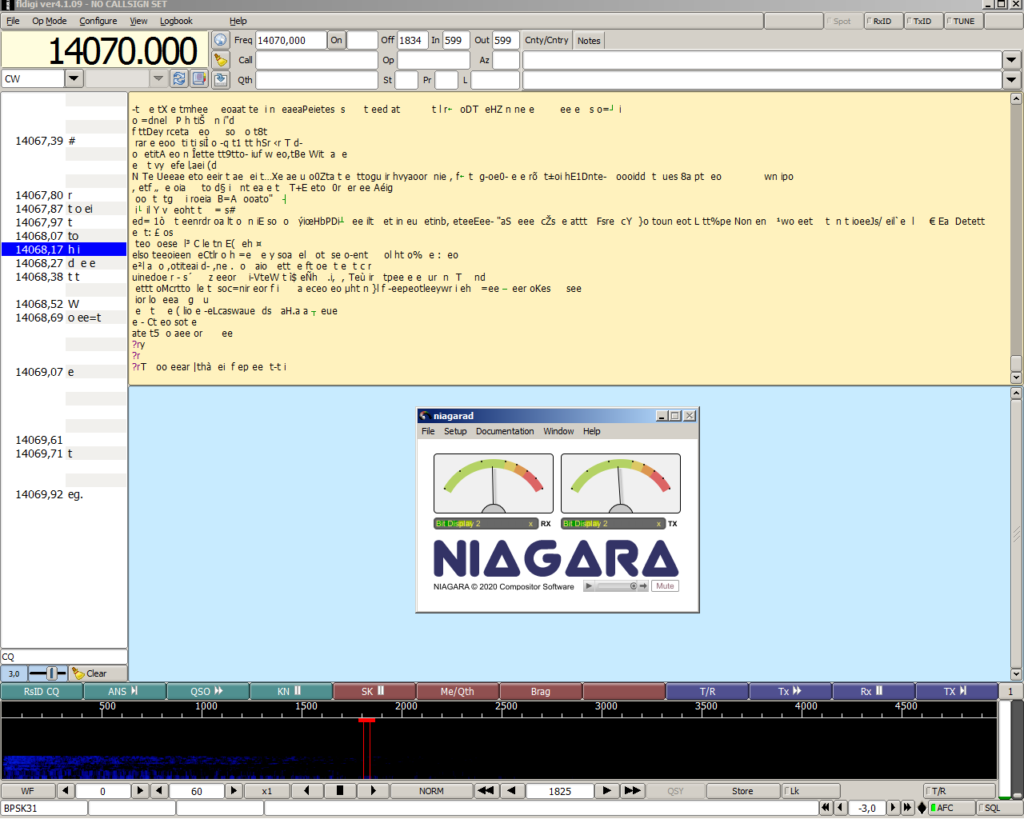Niagara 12
Niagara project has left a new milestone: now its dump consists of 7539 MIB’s. It’s important to notice that middleware submission now goes at 34 fps at speed of 8192 bpm, which equals to IPv6 network prefix of 51:5C::.

Now, the mystery of a signal submitted to sound card output revealed. The signal is detected with another software: fldigi ver4.1.09. The signal is composite and can be decoded using almost every software modem in this program. I frequently use BPSK31, but if I want faster composition, I use BPSK63 or even QPSK125. However, handshake is only detectable up to BPSK63 mode. Dump works in the following way: the signal is accumulated up to the saturation point and all 7539 MIB’s composed fast using random VRF selection. In this way, I aggregate the line and then drop it off with only auxiliary interface acting. At that moment CQ’s detected on different subchannels spaced equally within a channel. Each subchannel has its own mark like “t”, “i”, “ya”, “y” – the later three transmit my own messages in neuro chat manner. However, no equipment is connected to my head except of plug-in or circumarual headphones. I can confirm that “i” channel transmitted the command related to Compositor RTOS 9, which looked like: “c9 os noosgui UOhm 0”. It states that I apply command line expression to control resistance of Compositor RTOS 9.0.2 generic protocol and set it to 0. I made the transmission via client OS Niagara middleware.
This and other commands just prove the fact that I am, the subject creator, connected to a signal network, which suits control of the peers reciprocity. This connection is authorized on any machine I work on and detected as artificial signal on sound card output.